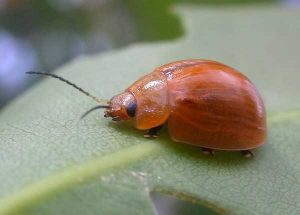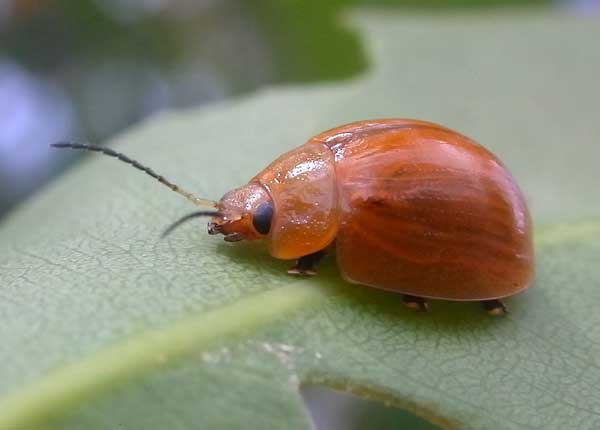
LEXINGTON — A tiny hitchhiker newly discovered in South Carolina could portend trouble for homeowners who relish the sweet smell of eucalyptus trees.
A Clemson University Extension agent in Lexington County has identified the first eucalyptus leaf beetle discovered in South Carolina.
“A homeowner brought it into the Lexington Extension office from West Columbia. I knew it was a tortoise beetle; it was just a matter of funding out what kind it was,” said Vicky Bertagnolli. “Eucalyptus typically doesn’t have that many pests, so it was pretty easy to find.”
Once she had identified the invasive pest, Bertagnolli sent photos to the U.S. Department of Agriculture and entomologists at Texas A&M and Auburn University, where she is completing a master’s degree in entomology, for independent confirmation.
Separate samples of the bugs then arrived at the Plant Problem Clinic, a part of Clemson’s Regulatory Services unit, from a retail nursery in Richland County and a homeowner in Chester.
The bugs likely hitched a ride on a shipment of eucalyptus from the other side of the continent, Bertagnolli said. They can cause extensive damage to eucalyptus leaves, potentially endangering the plant.
“They have a big problem with the beetles on commercial eucalyptus in California,” Bertagnolli said. “In South Carolina we don’t have commercial eucalyptus production, but it certainly could be a problem in landscapes.”
A popular tree in home and business landscapes, the eucalyptus is prized both for its look and its aroma. It thrives in warm climates and many varieties have eye-catching, silvery leaves.
A member of the myrtle family, eucalyptus trees are native to Australia and were brought to California during the Gold Rush. The state encouraged planting of the fast-growing trees in hopes they would provide timber for construction, only to learn that the wood wasn’t as suitable for the task as were native trees.
Still, the California climate proved excellent for the Australian import and the state now hosts commercial nurseries that supply much of the country with eucalyptus for landscapes.
But invasive pests of the tree have followed. Several kinds of eucalyptus pests entered California in the past decade, including two kinds of beetles: those that bore into the tree’s trunk and stems and those like the kind discovered in South Carolina that chew the leaves.
The eucalyptus beetle is a regulated pest in California, but not nationally, said Sherry Autlman, who coordinates Clemson’s Cooperative Agricultural Pest Survey program. Until now, it had never ventured into South Carolina.
“They found the first species of eucalyptus beetle in Riverside County in 1998. It’s in most of the counties in California now,” Bertagnolli said. “A second species was discovered in Orange County in 2003, and by 2009 had found its way into four nearby counties. That’s the species we found here. It had remained relatively contained until hitched a ride east.”

